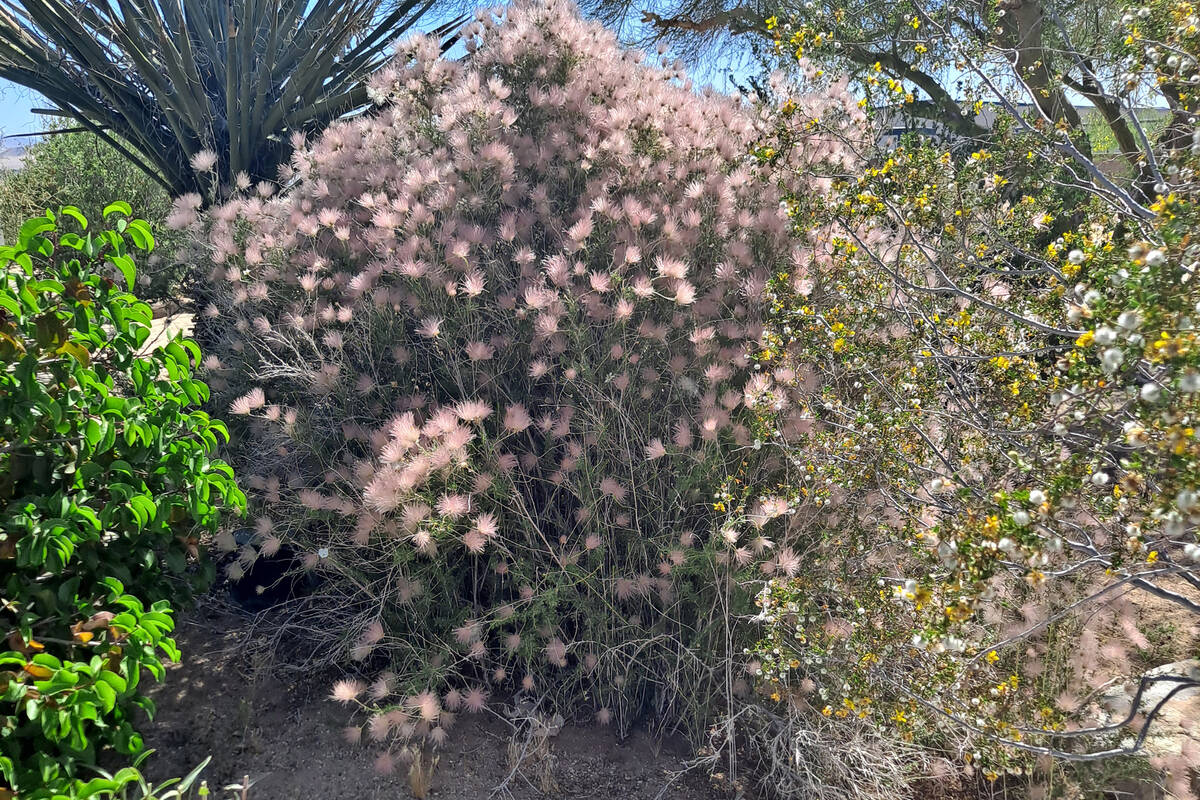Why did my Apache plume suddenly take a turn for the worse?
Q: I bought an Apache plume last spring that has not grown all that well. It started out blooming nicely and producing plumes but then stopped and the leaves became brown. What is the proper watering for this plant? I read that it doesn’t like “wet feet.”
A: You are right: Apache plume does not like “wet feet.” It is definitely a low-water user. Water deeply but infrequently. It will do best on eastern side of the home and not in full sun.
However, it is not a desert plant.
The soil around most valley homes is a fill, not topsoil. These soils lack nutrients and often drain poorly. Water not draining from around the roots can cause poor drainage. Be sure to use organics (compost or wood chips) mixed into the soil. That will help water drain from around the roots. Use that amended soil when you plant.
In October, dig the plant up (you can dig and replant it for up to three years) and put it in a different spot. This time, amend the soil with compost using about 50 percent by volume. Cover the planted area in wood chips 2 to 3 inches deep and water it in. Stake the plant to keep the roots from moving while it re-establishes itself. Water no more than twice a week, deeply, in the summer, less often in the winter.
Q: I would like to prune my tree. How much can I remove? Or is there a better way to have the plant fill out?
A: It depends on the plant, whether it has been grafted or not, if it’s doing well or looks sickly, as well as its stage of growth. If we are talking about a healthy, ungrafted but mature tree (at least 75 percent of its potential size), then removing about 20 to 25 percent is a safe bet.
The preferred method of pruning is called drop crotching, rather than topping. Topping a tree results in a thicker canopy and relies on many heading cuts that remove terminal buds. Drop crotching removes entire limbs at their so-called crotch. Most of the pruning cuts are made with a sanitized lopper or chain saw.
However, some plants can be cut nearly to the ground, and they will grow back. Doing this requires knowing how the plant will respond after a cut.
Many shrubs are grafted, particularly rose shrubs. The graft might allow winter pruning as low as 12 inches in some varieties of roses, but 15 or even 18 inches is preferred. Pruning cuts less than 12 inches might result in suckering beneath the rootstock.
Growth from a rootstock, or suckering, usually results in strong vertical growth that originates from a sucker that grows from below the graft union.
Q: I read your information about fruit and flower of grapes only producing fruit on 2-year-old wood. I am confused about how to prune my beautiful grape vines. Just what do I remove, or do I even need to remove any of the vines?
A: Yes, it can be confusing. Production of grapes is always near the growth that finished last year. With my method you will need two passes. Some commercial vineyards can make one, but it is late in the year.
First, decide if your grape must be cane pruned or spur pruned. When pruning grapes, it is important to know where the fruit is produced. If the fruit is produced at the very base of last year’s growth, it is spur pruned. If the fruit is produced several inches (or buds) away from the base of that same growth, it must be cane pruned.
Canes are only longer spurs. Spurs are one or two buds of new growth in length (about a quarter inch in length). Canes are somewhere around 8 to 10 inches of new growth (six to eight buds) in length. Sometime in winter to late spring, prune both the canes and spurs to about 12 inches in length. Precision is not important at the first pruning cut of the year.
Around the beginning of March (second cut) start to watch for the buds of the grapevine to start to swell. Once the buds begin to swell, you have about one week to finish deciding about whether to prune into canes or spurs. If you are not sure, it is always safer to cane prune (leaving six to eight buds) rather than spur prune (one or two buds). If you spur prune all of it, you may have a very small amount of fruit.
In April, remove small clusters and concentrate on the remaining large clusters. If you are growing your grapevine on a trellis, start by spacing the remaining clusters about 8 to 10 inches apart. If your grapes are on an arbor of some sort you will have to play around with the bunches. Bunch management is species specific. Some types of grapes produce lots of bunches. Others do not.
During the same week pinch and remove about one-third of the remaining clusters of grapes. The individual berries will be green, and about the size of baby peas, but in an upside-down, triangular cluster. If you are growing grapes for juice or wine, the size of the berries is not so important. If you are growing grapes for fresh eating, you want grape bunches as large as you can get them. If you don’t do this, you will have small berries.
Play around with the spacing of the bunches and pinching to increase or decrease the size of your berries. If grape bunch management doesn’t work well enough for you, then you must use chemicals such as gibberellic acid.
Bob Morris is a horticulture expert and professor emeritus of UNLV. Visit his blog at xtremehorticulture.blogspot.com. Send questions to Extremehort@aol.com.

















